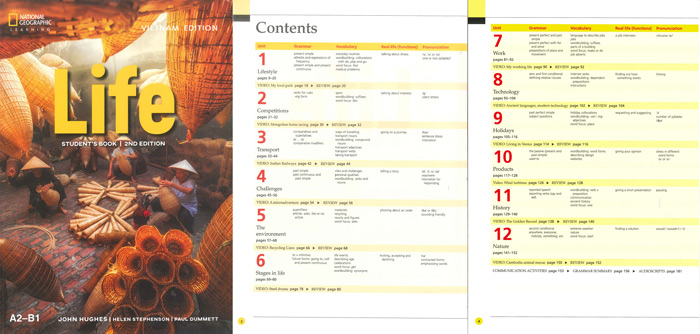Học viên đang ôn thi VSTEP B1 và cần bài mẫu Writing để tham khảo? Bài viết này tổng hợp các bài mẫu Writing B1 VSTEP cho Task 1 và Task 2, bám sát dạng đề thi mới nhất. Mỗi bài đều có phân tích rõ ràng để học viên dễ hiểu và áp dụng hiệu quả vào bài làm thực tế.
Tổng quan về phần thi Writing trong kỳ thi VSTEP B1
Kỳ thi VSTEP B1 (Vietnamese Standardized Test of English Proficiency) là một bài thi đánh giá năng lực tiếng Anh theo Khung năng lực ngoại ngữ 6 bậc dùng cho Việt Nam. Trong đó, phần writing (viết) là một trong bốn kỹ năng được kiểm tra trong đề thi tiếng anh B1, có vai trò quan trọng trong việc đánh giá khả năng sử dụng tiếng Anh của thí sinh trong các tình huống giao tiếp thực tế.
Cấu trúc phần thi writing B1 gồm 2 task:
- Task 1 – viết thư hoặc email (khoảng 120–140 từ): Thí sinh sẽ được yêu cầu viết một bức thư hoặc email dựa trên tình huống cụ thể. Dạng bài có thể là thư thân mật (gửi bạn bè, người quen) hoặc thư trang trọng (gửi giáo viên, lãnh đạo, cơ quan…).
- Task 2 – viết bài luận nêu ý kiến (opinion essay) (khoảng 140–170 từ): Bài viết yêu cầu thí sinh trình bày quan điểm về một chủ đề xã hội quen thuộc, đưa ra lý do, dẫn chứng và cấu trúc bài viết theo logic rõ ràng.
Thời gian làm bài và yêu cầu:
- Tổng thời gian viết: 60 phút
- Yêu cầu thí sinh chia thời gian hợp lý giữa 2 phần (nên dành 20 phút cho Task 1, 35–40 phút cho Task 2, còn lại để rà soát)

Tiêu chí chấm điểm phần writing VSTEP B1:
Phần viết được chấm theo 4 tiêu chí chính, rất giống với IELTS và các kỳ thi đánh giá học thuật khác:
- Task fulfillment (mức độ làm đúng yêu cầu đề bài)
- Coherence and cohesion (tính mạch lạc, logic giữa các đoạn và câu văn)
- Grammar and vocabulary (ngữ pháp đa dạng, đúng và từ vựng phù hợp)
- Overall organization (bố cục khoa học, kết cấu rõ ràng)
Thí sinh cần đảm bảo viết đúng số lượng từ yêu cầu, không lạc đề, không viết sai kết cấu đoạn văn. Việc viết thiếu, dư từ quá nhiều hoặc dùng sai tone (ví dụ: viết thư trang trọng bằng lối viết thân mật) đều có thể bị trừ điểm.
Tổng hợp bài mẫu Writing B1 VSTEP đạt điểm cao
Để làm tốt phần thi writing trong kỳ thi VSTEP B1, bên cạnh việc hiểu rõ cấu trúc đề thì việc tham khảo các bài mẫu chuẩn theo định dạng thi thật là cực kỳ cần thiết. Bài mẫu giúp thí sinh hình dung được cách triển khai ý, cách sử dụng từ ngữ phù hợp và bố cục logic để đạt điểm cao.
Đăng ký nhận tài liệu ôn thi tiếng anh B1 Vstep – Chuẩn định dạng format bài thi của Bộ Giáo dục
Bài mẫu Writing B1 VSTEP Task 1 – Viết thư/email
Phần viết thư tiếng anh B1 yêu cầu thí sinh viết một thư hoặc email dựa trên tình huống được cung cấp. Đây thường là một đoạn văn ngắn dài khoảng 120–140 từ, nhằm kiểm tra khả năng viết theo ngữ cảnh thực tế, sử dụng giọng điệu (tone) phù hợp và truyền đạt thông tin rõ ràng, mạch lạc.
Cấu trúc bài viết thư/email mẫu (4 phần):
- Opening (Mở đầu): Gửi lời chào đúng ngữ cảnh (Dear John, Dear Sir/Madam…)
- Introduction: Giới thiệu mục đích viết thư/email
- Main body: Trình bày 2–3 ý chính theo yêu cầu đề bài (nói rõ, mạch lạc, dùng câu đơn giản, đúng thì)
- Ending: Lời cảm ơn, kết thúc (I look forward to hearing from you…) + ký tên
Bài mẫu writing B1 VSTEP Task 1
Bài mẫu 1: Viết email mời bạn tham gia sự kiện
You are organizing an event at school. Write an email (around 120–140 words) to invite your friend. In your email:
- Describe the event
- Tell your friend why you want them to come
- Give details about time and place
Bài mẫu:
I hope you’re doing well! Our school is holding an English Speaking Contest next Friday, and I thought you might be interested. I’ll be one of the participants, and it would mean a lot if you could come and support me.
The contest starts at 2 p.m. in the school auditorium and lasts about two hours. There will be many exciting performances, short talks, and fun games.
Let me know if you can join—I really hope to see you there!
Best wishes,
HoaBài mẫu 2: Viết thư xin nghỉ học gửi giáo viên
You couldn’t attend your English class last week. Write a formal email (120–140 words) to your teacher. In your email:
- Apologize for your absence
- Explain the reason
- Ask if there is any homework or material to review
Bài mẫu:
Dear Ms. Linh,
I hope you are well. I’m writing to apologize for missing the English class last Friday. Unfortunately, I had a fever and had to stay home and rest.
I understand that we’re preparing for the mid-term test, so I would like to ask if there are any materials or assignments I should complete to catch up.
I truly value your class, and I don’t want to fall behind. Thank you in advance for your help.
Sincerely,
Nguyễn Thu TrangBài mẫu 3: Viết email hỏi thêm thông tin về khóa học
You are planning to join an English course at a language center. Write an email (about 120–140 words) to ask for more information. In your email:
- Introduce yourself
- Ask about course schedule and fees
- Request information about learning materials
Bài mẫu:
Dear Sir/Madam,
My name is Tuấn, and I’m interested in joining your upcoming English course for intermediate learners. I found some basic details on your website, but I would like to ask a few more questions.
Could you please let me know the course schedule, duration, and tuition fee? Also, do I need to buy any textbooks, or are materials included?
I hope to receive your response soon so that I can register in time.
Best regards,
Nguyễn Minh Tuấn
Bài mẫu Writing B1 VSTEP Task 2 – Viết luận ngắn
Task 2 trong phần thi writing của bài thi VSTEP B1 yêu cầu thí sinh viết một bài luận ngắn (opinion essay) để trình bày quan điểm về một chủ đề quen thuộc trong xã hội. Bài viết thường có độ dài tối thiểu 250 từ, đánh giá khả năng lập luận, sắp xếp thông tin, sử dụng từ vựng và cấu trúc ngữ pháp tiếng anh B1.
Dạng đề phổ biến:
- Opinion (nêu quan điểm): “Do you agree or disagree…?”
- Advantages and Disadvantages
- Problem and Solution
- Cause and Solution
Cấu trúc bài viết gợi ý (4 đoạn):
- Introduction: Paraphrase lại đề bài + đưa ra quan điểm (nếu yêu cầu)
- Body 1: Triển khai ý chính số 1, có dẫn chứng
- Body 2: Triển khai ý chính số 2
- Conclusion: Khẳng định lại quan điểm hoặc tóm tắt hai ý chính
Liên từ thường dùng: In my opinion, Firstly, Secondly, For example, As a result, In conclusion…
Bài mẫu writing B1 VSTEP Task 2
Bài mẫu 1 – Opinion Essay
Đề bài: Do you agree or disagree with the statement: “Students should wear uniforms at school.” Give reasons and examples to support your opinion.
Bài mẫu:
In many countries, schools require students to wear uniforms every day. Some people believe this rule is unnecessary, while others think it is important for discipline and equality. Personally, I believe that students should wear uniforms at school for several reasons.
First of all, uniforms create a sense of equality among students. When everyone dresses the same, it reduces the pressure to wear fashionable or expensive clothes. As a result, students from low-income families do not feel embarrassed or left out. This helps to eliminate social gaps in the classroom and allows students to focus more on studying.
Secondly, uniforms make identification and safety easier. If all students wear the same clothes, it is easier for teachers and school staff to recognize who belongs to the school. This can help prevent outsiders from entering the school without permission. It also helps during field trips or emergencies when teachers need to manage large groups of students.
In addition, wearing a uniform helps students develop discipline and responsibility. By dressing neatly and appropriately every day, students learn to follow rules and respect the school environment. This prepares them for future workplaces where dress codes are common.
Of course, some people may argue that uniforms limit students’ freedom of expression. However, I think students can still express their personality through their behavior, hobbies, or ideas in class, not only through clothing.
In conclusion, I strongly support the idea that school uniforms should be required. They promote equality, strengthen discipline, and make schools a safer and more focused place for learning.
Bài mẫu 2 – Advantages and Disadvantages
Đề bài: Discuss the advantages and disadvantages of using the internet for learning. Support your ideas with reasons and examples.
Bài mẫu:
In recent years, the internet has become a very important tool in education. Many students and teachers use it daily for learning and teaching. While learning online brings many advantages, it also has some disadvantages.
One of the biggest advantages is access to a wide range of information. With just a few clicks, students can find articles, videos, and resources on almost any topic. This helps them understand lessons better and learn beyond what is taught in the classroom. In addition, the internet allows flexible learning. Students can study anytime and anywhere, which is especially useful for people who are busy or live far from schools.
However, there are also disadvantages. Firstly, not all information on the internet is reliable. Some students may read incorrect data or be misled by unofficial websites. Secondly, spending too much time online can lead to health problems such as eye strain or poor posture. It can also cause students to become distracted by social media or games instead of focusing on their lessons.
Moreover, learning online requires self-discipline. Without a teacher present, some students may find it hard to stay motivated or follow a structured schedule. This may reduce the effectiveness of their study.
In conclusion, the internet is a powerful learning tool with many benefits, especially in terms of accessibility and flexibility. However, students need to be careful about how they use it. To make the most of online learning, they should use reliable sources and manage their time wisely.
Bài mẫu 3 – Problem and Solution
Đề bài: Nowadays, many young people do not do enough physical activity. What problems does this cause, and what can be done to solve it? Support your ideas with examples.
Bài mẫu:
In today’s modern society, many young people do not participate in enough physical activity. This situation has become more common due to the rise of technology and changes in lifestyle. It can lead to several serious problems, but there are also actions that can be taken to improve the situation.
One major problem is health-related issues caused by a lack of exercise. Young people who sit too much and move too little are at higher risk of obesity, heart disease, and diabetes. In addition, they may suffer from low energy, poor sleep, and mental stress. Another issue is that being inactive for long periods can create bad habits that continue into adulthood, making it difficult for them to live a healthy lifestyle later.
To solve these problems, both schools and families need to take action. Schools should provide more opportunities for physical education, such as daily exercise sessions, sports clubs, or outdoor activities. These programs can help students develop an interest in movement from an early age. At the same time, parents should encourage children to limit screen time and take part in physical play, walking, or cycling as daily routines.
Moreover, governments can help by building more parks and sports facilities that are free and safe to access. Public campaigns that raise awareness about the importance of exercise can also make a difference.
In conclusion, the lack of physical activity among young people is a growing concern that affects their health and quality of life. By involving schools, families, and communities, we can encourage young people to be more active and develop lasting healthy habits.
Bài mẫu 4 – Cause and Solution
Đề bài: Many university students have difficulty managing their time effectively. What are the causes of this problem, and what can be done to solve it?
Bài mẫu:
Time management is a common challenge for many university students. Although they have more freedom compared to high school, they often struggle to balance studying, social life, and part-time jobs. This essay will discuss the main causes of poor time management and suggest practical solutions.
One major cause is the lack of planning skills. Many students are not taught how to organize their daily tasks effectively. As a result, they tend to delay assignments, forget deadlines, or study at the last minute. This leads to stress and lower academic performance. In addition, distractions from technology, such as smartphones and social media, often take up a lot of students’ time without them realizing it.
Another reason is overcommitment. Some students take on too many activities, including clubs, part-time jobs, and social events. Without a clear schedule, they find it hard to prioritize and end up rushing or missing important tasks.
To solve this problem, universities can offer workshops on time management and study skills at the beginning of each academic year. These sessions can help students build practical tools like to-do lists, weekly planners, or time-blocking methods. Secondly, students themselves need to develop self-awareness and discipline. Turning off notifications while studying, setting daily goals, and taking regular breaks can greatly improve productivity.
In conclusion, poor time management among university students is mainly caused by a lack of planning and too many distractions. By learning effective strategies and making small behavioral changes, students can use their time better and reduce stress throughout their studies.
Phần thi writing trong B1 VSTEP không quá phức tạp nhưng đòi hỏi thí sinh nắm chắc cách tổ chức bài viết, từ vựng học thuật phổ thông và biết cách trình bày mạch lạc. Việc luyện tập bài mẫu theo dạng đề cụ thể là cách tốt nhất để cải thiện kỹ năng và tăng điểm phần viết.






